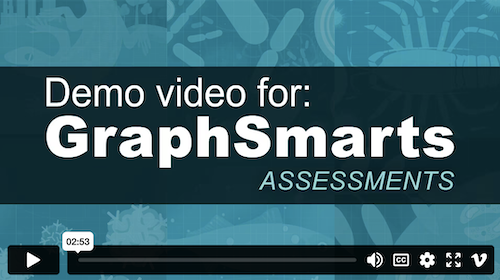Evaluate your biology students' graphing abilities
GraphSmarts Assessments analyzes the graph construction and interpretation skills of biology undergraduates. Being developed by SimBio as part of a multi-institutional NSF-funded research project, GraphSmarts Assessments includes a range of biological scenarios (see below) that provide the framework for students to create graphs and answer free-response questions. Algorithms based on graphing conventions score the graphs and questions to identify trouble spots.
Instructor Reports
After a class completes an assessment, instructors receive a report including an overall score, a score for each graphing competency, and the percentage of students who made mistakes. Student scores reflect the average of nine graphing practices, including variable relevance, graph type, axis conventions, and data variability.
View sample Instructor Report
SimBio's goals for this ongoing research are twofold: (1) understand student challenges with graphing; and (2) provide data to develop evidence-based graph construction teaching tools.
If you are interested in this project and potentially having your class assessed, please get in touch.
I'm Interested!
Explore GraphSmarts Assessments:
Further reading:
- Meir, E., Gardner, S.M., Maruca, S., Suazo-Flores, E., Abraham, J.K. (2023). Building a Performance-Based Assessment of Graph Construction Using Evidence-Centered Design Spector, M.J., Lockee, B.B., Childress, M.D. (eds) Learning, Design, and Technology. Springer, Cham.
Provides an example and lessons learned from using design-based research to go through multiple iterations of a new performance-based graph construction assessment.” - Gardner, S.M., Suazo-Flores, E., Maruca, S., Abraham J.K., Karippadath, A., Meir, E. 2021. Biology Undergraduate Students’ Graphing Practice in Digital Versus Pen and Paper Graphing Environments. J Sci Educ Technol
The first publication from a large multi-institution effort to develop performance-based assessments of graphing ability among biology students, this paper compares the results from the SimBio-written digital graphing assessment to a pen and paper assessment.
Collaborators on the GraphSmarts Assessments project:
- Stephanie Gardner, PI – Purdue University
Gardner Lab participants include:
Nouran E Amin
Emily A Hutton
Lauren E Stoczynski - Joel Abraham – CSU Fullerton
- Ryan Baker, co-PI – University of Pennsylvania
Baker lab participants include:
Alexandra Andres
Stefan Slater - SimBio project team includes:
Eli Meir, co-PI
Isobel Buck
Jasmine Donkoh
Amy Gallagher
Susan Maruca
Joshua Quick - And many others
This project is funded by NSF Grant #2111150. Any opinions, findings, and conclusions or recommendations expressed in this material are those of the author (s) and do not necessarily reflect the views of the National Science Foundation.




